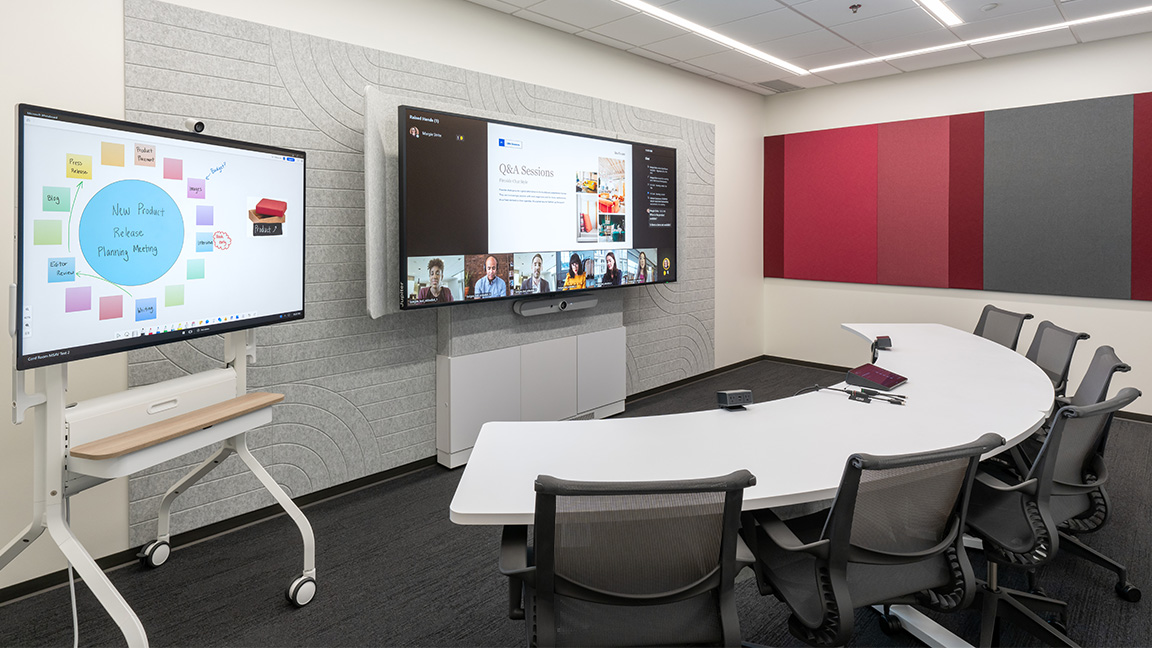Viewpoint: Exploring the 5 Pillars of the New Workplace Paradigm
Hybrid collaboration cultivates belonging in today's successful corporate cultures.

The landscape of conferencing and collaboration has been forever transformed. In a world where remote work and hybrid models have become the norm, businesses that prioritize the cultivation of a culture of belonging are poised to succeed.
[Viewpoint: The Burden of Burnout]
The way forward involves leveraging transformational workplace experiences through strategically deployed AV systems. This approach ensures that employees feel valued, engaged, and connected, regardless of their physical location. This will take unique AV solutions designed to facilitate better collaboration, allowing individuals to be seen and heard, no matter where they choose to work.
As we explore conferencing and collaboration in the evolving meeting place, it’s evident that the hybrid workforce requires tailored approaches:
• The home office will demand high-quality AV products that can recreate the office experience at home. This is a shift away from sub-par, consumer-grade solutions with questionable reliability.
• Small conference room spaces must cater to both physical and remote attendees, approximating a 1:1 experience. This prevents alienation of remote workers and fosters collaboration. Basically, the focus here is on leveling the playing field.
• Quick brainstorming sessions in huddle rooms demand acoustic privacy, so top-notch audio quality remains critical.
A daily selection of the top stories for AV integrators, resellers and consultants. Sign up below.
• Equitable experiences are paramount in larger conference rooms, so AV plays a more influential role than ever. Solutions must offer clear audio and video coverage for both in-person and remote attendees.
• Awe-inspiring boardrooms reinforce a company’s culture and values—and demand flawless audio and video communication.
• Training rooms face unique AV challenges in the hybrid environment. Collaboration solutions that ensure uniform interaction among team members, regardless of location, are pivotal.
Tailored Spaces
In looking at how to proceed and select conferencing and collaboration solutions that will meet the standards of today’s meeting place, it’s necessary to establish the pillars of the new workplace paradigm. They include meeting equity, repeatable success, adaptability, reliability, and familiarity.
[AV Technology Manager’s Guide to Hybrid Workplace 2024]
The first pillar is achieving meeting equity. Creating equitable meeting experiences for remote and onsite workers signals a commitment to inclusion and collaboration. This means bringing together diverse voices from various locations onto the same platform while erasing the boundaries of physical distance. Conferencing experiences should be designed to ensure that every participant’s voice is heard and valued, creating an inclusive environment where collaboration thrives.
With reliable systems in place, employees can focus on their tasks without the worry of technical glitches disrupting their workflow.
Collaboration platforms like Teams and Zoom are incorporating features to facilitate this 1:1 experience, and conference rooms will require solutions that can effectively recreate it. They'll need tools such as PTZ cameras with intelligent auto-framing algorithms to keep participants in view, as well as multiple microphones and speakers so everyone can hear and be heard. Selecting meeting room furniture that is optimized for ideal on-camera presence is also critical. Traditional rectilinear tables don’t support ideal sight lines, resulting in poor visibility to a front-of-room videoconferencing camera system.
The second pillar is repeatable success, which is necessary in achieving efficiency in rollouts. Efficiency is key, especially in the dynamic landscape of the hybrid workplace. Businesses need to save both time and resources across multiroom meeting space rollouts to meet the growing demand for such spaces. This approach not only enhances collaboration, but also reflects an organization’s commitment to providing accessible and effective meeting opportunities for all.
[Legrand, Microsoft Partner of the Next Hybrid Conferencing Space]
Even within a WFH setup, repeatable success is important. For example, companies need to accommodate remote meetings from home with a desktop camera and lighting that ensure high-quality videoconferencing and streaming—and easily integrates with a speaker and microphone.
Adjust to the Flux
Adaptability is the third pillar. The workplace is in a constant state of flux, and conferencing spaces must be designed with adaptability in mind. Anticipating future needs and technological advancements allows organizations to modify conferencing spaces to suit evolving requirements. By specifying solutions that can scale and adjust as the organization grows, companies can future-proof their AV infrastructure.

In conference rooms, look for display mount solutions that provide ample storage space and the ability to add 21:9 ultra-wide or dual displays for enhanced screen real estate to support front row-type content experiences. For huddle rooms, this might mean a mobile conferencing system that can be moved between rooms on a mobile cart for optimized flexibility of resources.
The fourth pillar, reliability, is the linchpin of productive collaboration. With reliable systems in place, employees can focus on their tasks without the worry of technical glitches disrupting their workflow. In the home office, networking reliability is especially critical.
Remote monitoring and management tools are invaluable for identifying and addressing issues preemptively. In conference rooms, compact IP-controlled power products with remote monitoring and management (RMM) can help to address potential issues before they derail a meeting. Similarly, solutions that gives you the ability to proactively respond to network issues and remotely manage your clients’ systems will also boost reliability.
The final pillar is familiarity. Consistency across different office locations is paramount—familiarity really does breed comfort. A cohesive experience, regardless of location, not only reduces the learning curve but also reinforces a sense of unity and belonging among team members.
One other note of high importance is in-room audio and acoustics. Much of our modern office architecture is predominantly hard surfaces that create a very poor audio experience and can make it difficult for remote meeting attendees to hear what is being said. Strategies such as adding acoustically absorptive surfaces can ensure optimal audio experiences, which are critical to a positive hybrid meeting experience. Investing in reliable, high-quality audio solutions enhances overall conferencing experiences in any meeting room environment, and advancements in intelligent spatial audio are game-changing to support equitable audio experiences for all.
In the era of hybrid collaboration, embracing transformational workplace experiences is crucial for fostering a culture of belonging and collaboration. As the workplace continues to evolve, businesses that invest in solutions that embrace and deliver meeting equity will stand out as leaders in cultivating a sense of belonging among their workforces.
David Albright serves as senior business development manager, hybrid collaboration and learning, at Legrand | AV.

